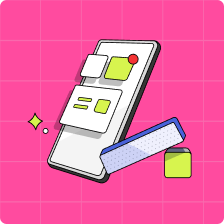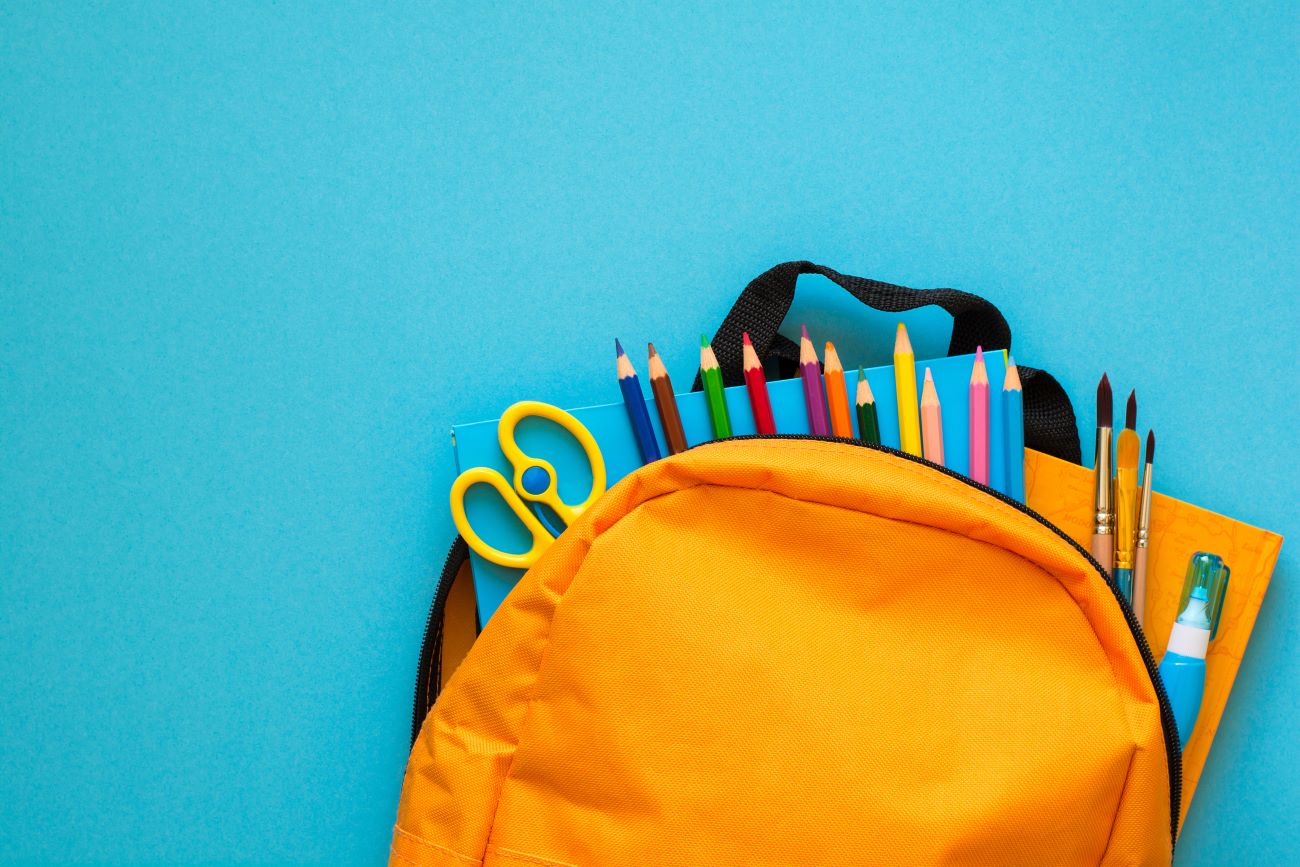Here are some time-tested and cool new ideas for parents and kids who are hoping to save money when shopping for back-to-school items this season.
Summer never feels long enough, and before you know it, you only have a couple of weeks left (sometimes days!) to make your way down your kids back-to-school checklist. The serenity of summer is swapped for the back-to-school rush, and memories of relaxing near the beach fade away and are replaced with stressful to-dos – but, it doesn’t have to be that way!
Whether you have left everything to the last minute or not, there are a few things you can do to keep your head above water this back-to-school season, and even come out of it having saved money. Making a list of necessary items, creating a budget, and comparing the best student deals (online and off) are a few steps you can take in saving money – and not buying another thing your kid doesn’t need!
Here is a list of ideas (some tried and true, others brand new) that will help you buy the essential items your kid needs this year, reduce buyers remorse, and save money along the way.

When do kids go back to school for 2023–24?
First things first, not every kid starts school on the same day. Below is a list of each province and territory in Canada with corresponding first day of school dates for elementary and high school students.
| Province or territory | When school returns in 2023–2024 |
| British Columbia | Tuesday, September 3, 2024 |
| Alberta | Thursday, August 29, 2024 in Edmonton Thursday, August 29, 2024 in Calgary |
| Saskatchewan | Tuesday, September 3, 2024 |
| Manitoba | Tuesday, September 3, 2024 |
| Ontario | Tuesday, September 3, 2024 for TDSB, YDSB, CDSB, OCDSB, DSBN, PDSB, GEDSB, and DDSB. Wednesday, September 4, 2024 for HDSB, WRDSB, and WRDSB. |
| Quebec | Friday, August 30, 2024 |
| New Brunswick | Tuesday, September 3, 2024 |
| Nova Scotia | Thursday, September 5 2024 for Cape Breton Regional Centre for Education and Chignecto Central Regional Centre for Education. Thursday, September 5, 2024 for Halifax Regional Centre for Education. |
| Prince Edward Island | Thursday, September 5, 2024 |
| Newfoundland and Labrador | Wednesday, September 4, 2024 |
| Northwest Territories | Wednesday, August 28, 2024 |
| Nunavut | Varies from August 14 to September 5, 2024. |
| Yukon | Most schools go back Tuesday, August 27, 2024. |
How much do Canadians spend on back to school supplies?
Canadians estimate they have spent anywhere up to $900 on average for back-to-school shopping every year since 2020. And the price tag for school supplies is only expected to go up this year – with 85.7% of respondents believing they will spend as much as last year – or more. Of course, whether you have little kids or teens changes where the funds flow, but it all seems to even out in the end as the year progresses. Little kids grow out of shoes and clothing in the blink of an eye, and need lots of last minute craft supplies and pencils. Teens, on the other hand, need more advanced technological tools like laptops and scientific calculators, plus course specific materials.
What do you need for back to school supplies?
Most schools will have a back-to-school supply list for each grade, and as they get older, for each class. If that isn’t available to you, try asking friends or neighbors who have older kids what they were happy they bought and what they wished they’d left in their shopping cart. The next step is compiling a list of “needs” and “wants”, and first focusing on the “needs” as you hit the shops.
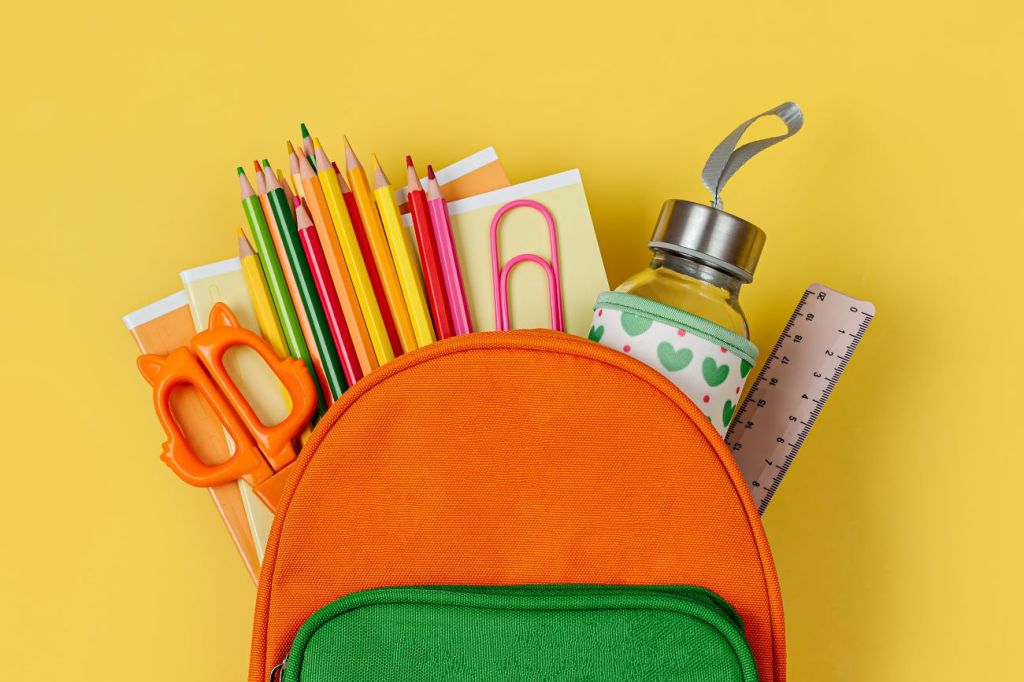
Elementary school
- Backpack
- Lunch box or bag
- Water bottle
- Pencil case
- Pencils
- Pencil crayons
- Sharpener
- Blunt tip scissors
- Eraser
- Ruler
- Glue stick
- Gym shoes
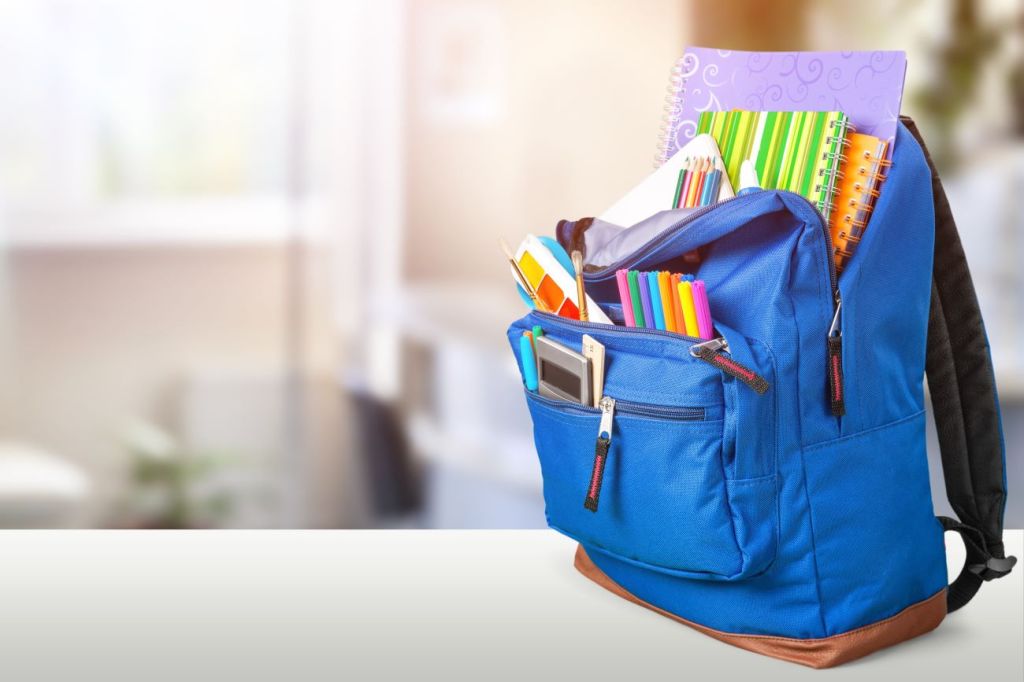
Middle school
- Backpack
- Lunch box or bag
- Water bottle
- Pencil case
- Pens
- Pencils
- Markers
- Highlighters
- White-out
- Eraser
- Glue
- Binder
- Loose-leaf lined paper
- Graph paper
- Subject dividers
- Notebooks
- Report cover
- Calculator
- Geometry set
- Combination lock
- Gym shoes
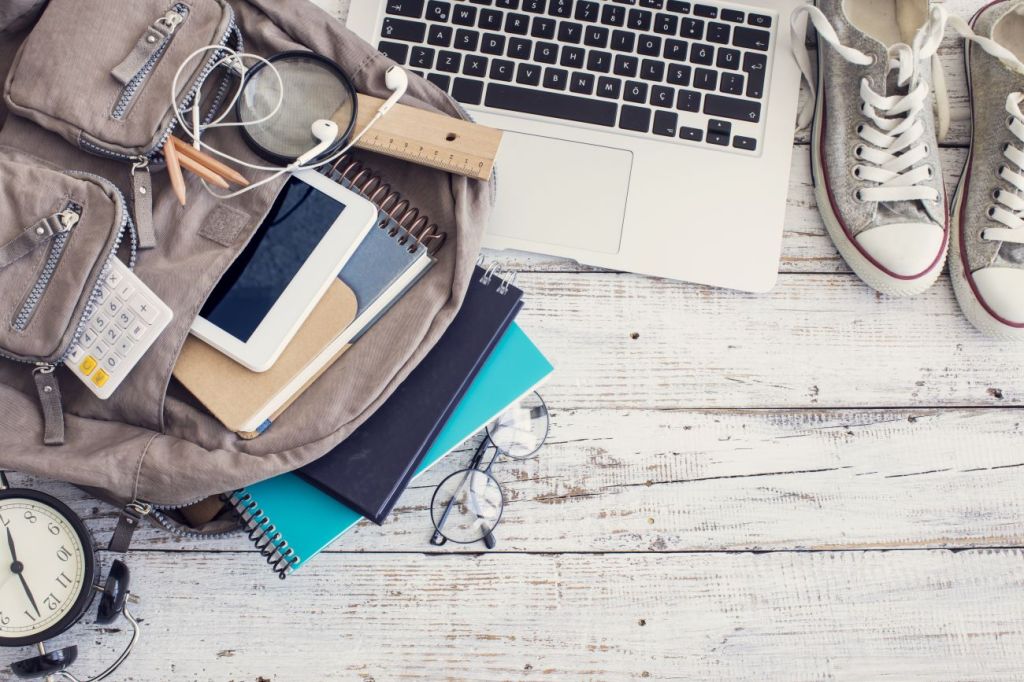
High school
- Backpack
- Laptop
- Headphones
- Water bottle
- Pencil case
- Pens
- Pencils
- Highlighters
- Sharpies
- White-out
- Stapler
- Scissors
- Post-its
- Index cards
- Binders
- Clear binder pouches
- Loose-leaf lined paper
- Subject dividers
- Notebooks
- Report cover
- Weekly planner
- Scientific calculator
- Geometry set
- Combination lock
- Locker hooks
This list covers the basics, but it’s important to remember it doesn’t account for the clothing items you may need depending on where you live. Autumn often requires raincoats and umbrellas, while winter-time means another warm jacket, or indoor and outdoor shoes. It is also worth considering that every kid is unique – depending on what they are studying, they may need less calculators and more art supplies or sneakers!
When should you go back to school shopping?
Earlier is better for picking up back-to-school supplies, as retailers are usually stocked for school as early as July with lots of attractive discount options. However, being an early-bird when it comes to preparing for shopping may not always be feasible for every family, as people go away to camps or cottages, or visit family that live far away. Not to mention, it could give anyone the blues to start shopping for school right after the school year ends! Whatever the case is for you, as long as you get organized and stick to a list of what you need, and tackle that list without feeling too enticed by all the dazzling displays and gleaming new gadgets, you will come out this back-to-school season victorious.
Learn more about the best daily back-to-school routines for kids and teens.
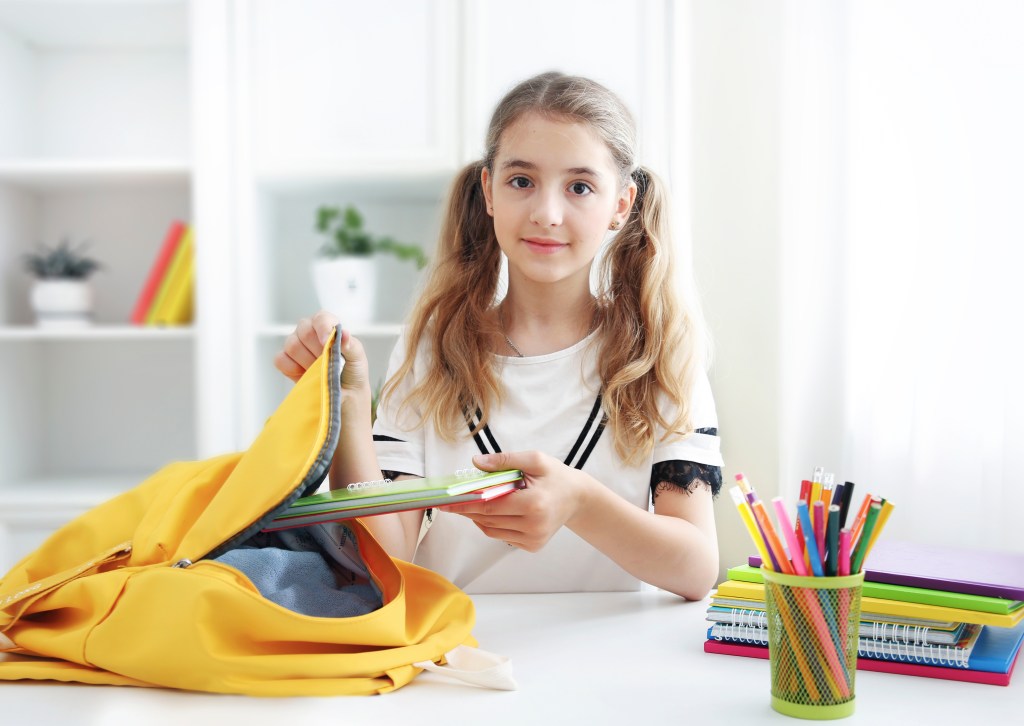
8 tips to save on back to school shopping
Back-to-school shopping can be daunting as you make your way down a mile-long list. Here are eight tips to stay within your family’s budget so you and your kid head into the school year without buyer’s remorse.
1. Decide on what are “needs” and what are “wants”
After you’ve downloaded your back-to-school checklist, spoken to friends with older kids, and considered what your kid may need clothing-wise depending on where you live – what’s next?
This is a great opportunity to teach your kids about what is needed versus what would be nice to have. They will learn that when they want something, they can earn it by helping babysit or shoveling the driveway. These extra items, or the funds for these items, could also be requested from family members for a holiday or birthday present.
2. Make a budget
Teaching your kid how to budget is arguably more important than many of the things they’ll learn in school. Money doesn’t grow on trees, so share with your kid the family budget and how much can be allocated to each category of items, whether it’s for clothing, tech, or supplies.
Tip: Kids and teens can use our free savings goal calculator to help budget for the back-to-school items.
3. Reuse, recycle, or swap
Does your neighbor or sibling have kids that are older than yours? Create a group with other parents who don’t want to overspend for back-to-school and see what you can swap with one another. Kids grow out of things so quickly, many of these items won’t be used for very long. Plus, take a look at what you have and see what you can reuse this year. You’d be surprised by how many items you can tick off without having to buy anything!

4. Buy in bulk
Do you know that your kid will use hundreds of pencils? Buy in bulk! You can save so much money by foreseeing at the beginning of the school year what items your kid will run through so you don’t pay a mark-up when they run out every other week.
5. Look for student discounts and compare prices
There are many family-owned and big-box stores that will offer discounts specifically for your kids school, or for students in general. Do a quick Google search before you head out to the shops or buy online, and see if what you are paying for at a store is actually a better deal than what you can find online, or vice versa.
6. Start saving for next school year right away
Once most of your items are bought, consider sharing how much supplies cost with your kid. It is a great learning opportunity to look at how much you spent on supplies this year and develop a budget for next year (taking into account inflation).
You can use the 50/30/20 rule (50% towards needs, 30% towards needs, and 20% towards savings) and put 20% of their allowance towards back-to-school shopping for next year. If they are a tween or teen, you can explain that this is a smart way to ensure they are able to purchase way more of their “wants” in the future!
7. Have teens pay for items they want (but don’t need)
If your teen is already saving and budgeting, you could start teaching them the value of money by getting them to buy the items they want, like that on-trend outfit or the latest headphones.
Expert tip: teach them the difference between fixed and variable costs to make sure they actually have the money they need to buy the item they’re eyeballing (and it isn’t just money that should be used for their upcoming cell phone bill or for an extracurricular activity they are hoping to sign up for).
8. Use money-saving apps
Teaching your kid financial literacy, and saving money on back-to-school shopping, doesn’t need to all fall on your shoulders.
Money-saving apps that are specifically designed for kids and teens (such as Mydoh) are a fantastic way to oversee your kids spending, help them maintain their budget, and receive money from anyone (even non-Mydoh users such as grandparents) who want to support your kid as they go back-to-school.
Download Mydoh to help your tweens and teens gain real-life experience managing their money.
This article offers general information only and is not intended as legal, financial or other professional advice. A professional advisor should be consulted regarding your specific situation. While the information presented is believed to be factual and current, its accuracy is not guaranteed and it should not be regarded as a complete analysis of the subjects discussed. All expressions of opinion reflect the judgment of the author(s) as of the date of publication and are subject to change. No endorsement of any third parties or their advice, opinions, information, products or services is expressly given or implied by Royal Bank of Canada or its affiliates.
